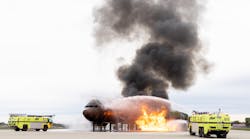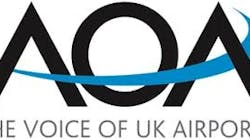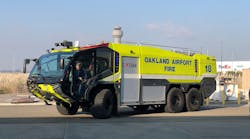It seems that in every group of people you work with, there are at least three kinds of people: an overbearing know-it-all who suffocates everyone around him, a timid pushover who never makes his voice heard, and a mediator who makes sure everyone is heard, that no one’s ideas are ignored, and that the team can move forward peaceably.
In other terms, these three personality and leadership styles can be referred to as aggressive (overbearing), passive (timid), and assertive (team builder). Surely you’ve picked out people in your hangar who embody these traits – but which one are you?
What is assertiveness?
Assertiveness means communicating your needs, wants, feelings, beliefs, and opinions to others respectfully. Aggressive people attack or ignore the opinions of others. Passive people never make their opinions known.
The Aircraft Maintenance Improvement Project (AMIP) says that research has shown that aircraft technicians are not generally very good at speaking up or being assertive. “Stating your position in the face of an adverse opinion, or communicating an idea that goes against what a group believes, is not something that comes easily to many people – it requires a level of assertiveness that for some people is uncomfortable,” it says.
Assertive behaviors
Rich Komarniski, president of Grey Owl Aviation Consultants, says the technician's role is to state his or her point of view clearly and make his or her frustrations and dissatisfactions known. This refusal to compromise standards include the technician giving management the kind of feedback required to ensure that management will be able to assist the technician to do their job. “If we develop the skills of being assertive, then we can do our jobs with pride and vigor and be rewarded accordingly,” he says.
Applied Human Factors in Aviation Maintenance, a book by Manoj S. Patankar and James Chapman Taylor, says that there are three levels of practicing assertiveness in the aircraft maintenance shop. The first level refers to speaking up when one notices a problem or discrepancy. The second level refers to reporting (typically through reports or self-disclosure to the company). The third level refers to following up on the root causes associated with factors leading up to the discrepancies. Each of these levels of assertiveness comes with its own set of obstacles. For example, the books says, people may not speak up because they did not realize there was a problem – some mechanics continue to assume that the already installed part was the correct part or a similar repair on another aircraft was performed correctly.
The importance of listening
Learning how to be effectively assertive can be tricky, especially in the workplace. Striking that delicate balance between “overbearing” and “timid” is often done through trial and error.
Operating in an assertive mode at work can strengthen relationships with your team. When a problem arises, listen to everyone’s ideas and try to find a solution that appeases everyone’s concerns. Let everyone voice their opinion and make sure the forum for discussion is a positive one. There is no room for cutting each other or each other’s ideas down in an effective team. When the team sees you acting in a way that is respectful of everyone, they will in turn see you with more respect. This will build your confidence and help you continue to be assertive.
J.H. Gittell, a contributor to the International Journal of Human Resource Management, says that frequent and timely problem solving communication, helping, sharing goals and knowledge, and showing mutual respect among workers improves on-time departure and shorter turnaround times in flight operations. Only through assertiveness are goals shared and good communication realized – this in turn leads to respect among peers.
Komarniski says that maintenance managers need to recognize their roles in not only their influence on the success of the company, but also their role in the development and recognition of their own staff. “Maintenance managers must be familiar with the behavior style of the people they supervise and utilize their talents, experience, and wisdom. As the employees become aware of behavior styles and understand their own behavior they see how they unwittingly contribute to some of their own problems and how they can make adjustments.”
Worst case scenario
AMIP says that stating concerns about a technical issue assertively in an aircraft maintenance environment can be the difference between action being taken to rectify a problem and the problem going unaddressed.
On Dec. 28, 1978, at 6:15 p.m. (PST), 173 crashed into a wooded, populated area of suburban Portland, OR, during an approach to the Portland International Airport. According to AirDisaster.com, of the 181 passengers and eight crewmembers aboard, eight passengers, the flight engineer, and a attendant were killed, and 21 passengers and two crewmembers were injured seriously. The National Transportation Safety Board determined that the probable cause of the accident was the failure of the captain to monitor properly the aircraft's fuel state and to properly respond to the low fuel state and the crewmember's advisories regarding fuel state. Contributing to the accident was the failure of the other two crewmembers either to fully comprehend the criticality of the fuel state or to successfully communicate their concern to the captain.
Final say
If you see that something is wrong with the maintenance task you are currently undertaking, or if you have any concerns about the quality of the job you have just completed, be assertive with your team. AMIP implores mechanics not to hide behind the passive excuse of a lack of time. After all, it says, if you haven’t got time to make sure the task is correct now, when will you have time to conduct the defect rectification and the maintenance incident investigation – when the aircraft returns because of a maintenance-related problem?
For more information visit:
www.greyowlaviation.com
www.defence.gov.au/dgta/AMIP.htm
www.ashgate.com
AMIP offers these tips for improving your assertiveness:
- Make a conscious decision to be assertive rather than aggressive or passive
- Think about a recent conflict and imagine how you could have handled it in a more assertive way
- Practice talking in an assertive way
- Take a problem-solving approach to conflict, and try to see the other people as your collaborators rather than your opposition
- Use assertive language such as “I feel” and “I think,” rather than aggressive language such as “You don’t understand …” or “You have no idea …”
- Don’t interrupt other people when they are talking, and try hard to listen and understand their point of view
- Suggest brainstorming ways to solve the problems as a team
- If an exchange doesn't go well, learn from the experience and plan how you will do things a little differently next time
This is the fifth in a series of articles on the Dirty Dozen. The Dirty Dozen was developed by Gordon Dupont at Transport Canada. They are critical factors in the area of human factors and safety; they are complacency, lack of knowledge, lack of teamwork, distraction, fatigue, lack of resources, pressure, lack of assertiveness, lack of communication, norms, stress, and lack of awareness.


